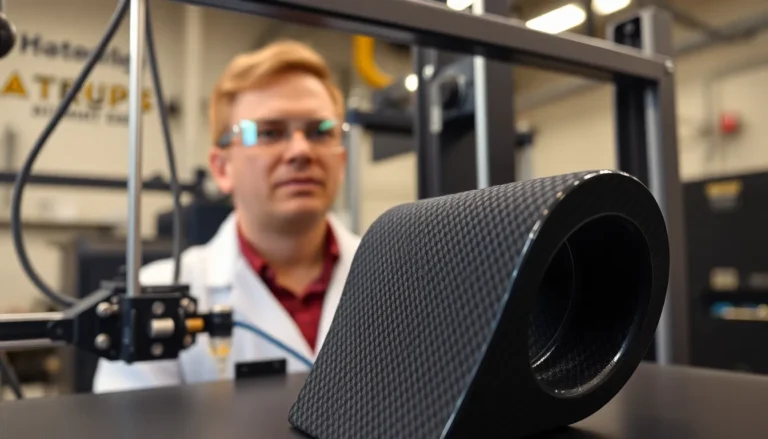Table of Contents
ToggleEver wondered if your car could double as a mobile nightclub without the judgmental stares? While tinted windows can make any ride feel cooler, North Carolina has some rules that keep things in check. Understanding the legal tint limits can save drivers from hefty fines and unwanted encounters with the law.
Understanding Legal Tint Regulations
North Carolina’s vehicle window tint regulations set specific limits for tint darkness and reflectivity. Windshields must allow at least 35% visible light transmission. Front side windows follow the same requirement, ensuring adequate visibility for drivers.
Back side windows and the rear window allow darker tinting options. These windows can have any tint darkness, allowing for personal style and privacy. Reflective tints, however, are also regulated. The front and back side windows must not exceed a 20% reflection level.
For SUV and van enthusiasts, these vehicles benefit from different regulations. The rear and side windows offer more flexibility in tint darkness compared to passenger vehicles, reflecting a blend of style and safety.
Drivers must maintain their tint to legal standards. Having a legal tint not only avoids fines but also ensures compliance with safety requirements. Many law enforcement officials carry meters to test window tint darkness on the spot.
To install tint legally, certified professionals offer services. Selecting a reputable shop ensures adherence to state laws while delivering a quality finish. Checking for proper documentation such as a Certificate of Compliance provides peace of mind for vehicle owners.
Understanding state regulations supports informed decisions regarding window tint. Heeding these guidelines enhances safety and promotes a stylish appearance without the risk of penalties. Familiarity with these laws helps vehicles stand out while remaining compliant, making the driving experience safer and more enjoyable.
What Is the Legal Tint in NC?

North Carolina’s regulations govern window tinting to ensure safety and compliance. Understanding these laws helps vehicle owners avoid penalties while enjoying the benefits of tinted windows.
Definition of Window Tinting
Window tinting involves applying a thin film to vehicle windows. This film can reduce glare, enhance privacy, and improve aesthetics. Various films exist, designed for different levels of light transmission, which impacts vision and comfort inside the vehicle. North Carolina law specifies limits on how dark a tint can be, measuring visible light transmission (VLT) percentage. For example, front side windows must allow at least 35% of light to pass through. Understanding VLT is essential for choosing the right tint.
Importance of Legal Compliance
Legal compliance with window tint laws prevents fines and enhances safety on the road. Law enforcement can conduct on-the-spot tint tests to ensure adherence to regulations. Not following the rules may lead to penalties, including fines and potential removal of illegally tinted film. Compliance protects not only the driver but also other road users, ensuring visibility remains optimal. Certified professionals can assist in selecting compliant films while providing necessary documentation. Prioritizing legal tint ensures vehicle owners can enjoy the aesthetic benefits without risking interruptions from law enforcement.
North Carolina Tint Laws
North Carolina enforces specific regulations regarding window tinting to ensure safety and compliance. Understanding these laws is essential for vehicle owners to avoid penalties.
Visible Light Transmission (VLT) Requirements
In North Carolina, the law mandates that front side windows must allow at least 35% visible light transmission. For back side and rear windows, the state permits darker tints, offering more flexibility. Those driving SUVs or vans benefit from relaxed restrictions, allowing them to opt for tints that provide additional privacy. Measure VLT before installation, as compliance affects law enforcement’s ability to test tint darkness on-site. Certified professionals can provide guidance and documentation to ensure that selected films meet legal standards.
Restrictions on Windshield Tinting
Restrictions apply specifically to windshield tinting in North Carolina. A tint strip is allowed along the top of the windshield, but it can’t extend beyond the AS-1 line or be darker than a certain percentage. The law dictates that windshields must have at least 35% VLT, ensuring drivers maintain adequate visibility. Non-compliance may lead to fines or the requirement to remove the tinted film. Law enforcement frequently checks for illegal tints during traffic stops, making it crucial to adhere to these regulations.
Benefits of Legal Window Tint
Legal window tint offers several advantages, enhancing both the driving experience and the vehicle’s functionality. Understanding these benefits encourages vehicle owners to comply with North Carolina’s regulations while enjoying increased comfort and style.
UV Protection
UV protection stands out as a significant benefit of legal window tint. It blocks up to 99% of harmful ultraviolet rays. This capability reduces the risk of skin cancer and prevents interior fading. Tinted windows help maintain the vehicle’s upholstery. Car interior elements, such as leather and plastics, can degrade over time without protection. Consequently, vehicle owners experience longer-lasting interiors while staying safe from UV exposure.
Increased Privacy
Increased privacy is another key advantage associated with legal window tint. Tinted windows deter prying eyes, making it difficult for outsiders to see inside. This added layer of security helps protect personal belongings left in the vehicle. Legal tint options allow for varying levels of darkness while remaining compliant with regulations. Drivers feel more at ease knowing that their personal space is shielded. The right tint can create a comfortable environment, especially for passengers who prefer seclusion during travel.
Consequences of Illegal Tint
Non-compliance with North Carolina’s tint laws leads to various consequences, including fines and penalties.
Fines and Penalties
Illegal tinting can incur fines up to $250. Police officers issue citations during traffic stops if visible light transmission percentages fall below legal limits. Repeat offenders face increased fines, making it essential to comply with regulations. Additionally, authorities mandate the removal of non-compliant tint films. Maintaining legal standards not only avoids penalties but also promotes safe driving conditions.
Risks to Safety
Illegal tint undermines visibility, increasing the risk of accidents. Darker films limit a driver’s ability to see pedestrians and fellow motorists in low-light conditions. Passengers might also experience discomfort due to reduced visibility. Law enforcement uses readily available tools to measure tint darkness, ensuring compliance for public safety. Consequently, adherence to legal tint requirements enhances overall road safety.
Understanding North Carolina’s legal tint regulations is vital for every vehicle owner. By adhering to the specified VLT percentages for windows, drivers can enjoy the benefits of tinted windows without facing fines or legal issues. Legal tint enhances privacy and protects against harmful UV rays while contributing to a vehicle’s overall aesthetics.
Complying with these laws not only ensures safety on the road but also promotes a more enjoyable driving experience. Vehicle owners should consult certified professionals to select the right tint and maintain compliance. Making informed choices about window tinting ultimately leads to a stylish and safe vehicle while avoiding the pitfalls of illegal tinting.




